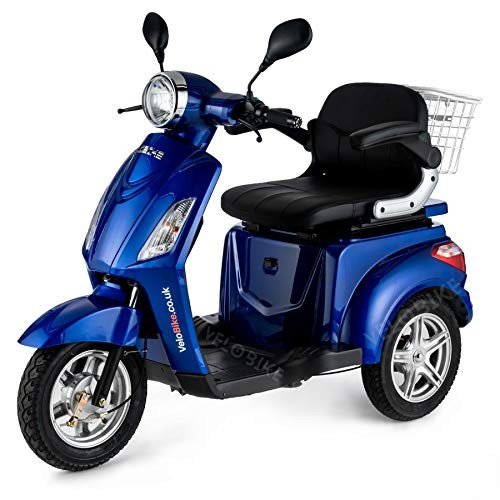Mobility Scooters: A Comprehensive Guide
Mobility scooters have become a necessary mode of transportation for numerous individuals facing mobility challenges. This post checks out the various facets of mobility scooters, including their types, advantages, functions, and a guide for potential buyers.
Understanding Mobility Scooters
Mobility scooters are electrically powered devices created for people with minimal mobility. They provide a method of transport for individuals who may have difficulty strolling but still want to keep their self-reliance. They come in numerous designs and functions to accommodate a broad variety of needs.
Types of Mobility Scooters
Mobility scooters can generally be categorized into 3 main types:
| Type | Description | Best For |
|---|---|---|
| Compact Scooters | These are small and lightweight, perfect for inside your home and short trips. | Users with minimal storage area or those who take a trip frequently. |
| Mid-size Scooters | A balance in between mobility and stability, ideal for both indoor and outdoor usage. | Those who require to cover a variety of terrains. |
| Heavy-duty Scooters | Big and robust, designed for rugged outdoor use and much heavier people. | Users needing extra weight capacity or going off-road. |
Secret Features of Mobility Scooters
The option of mobility scooter frequently depends on the features that align with private requirements. Here are a few of the key features to consider:
- Weight Capacity: Mobility scooters come with various weight limitations. It is essential to choose a scooter that can sufficiently support the user's weight.
- Variety: The range a scooter can take a trip on a single charge differs. Depending on user requirements, one may opt for scooters with a variety of as much as 40 miles.
- Speed: Most mobility scooters can reach speeds between 4 to 8 miles per hour. Consider what speed is comfy and safe for the intended environment.
- Turning Radius: A compact turning radius is vital for indoor usage, permitting simpler navigation in tight areas.
- Battery Type: The kind of batteries utilized can impact the scooter's performance. Lead-acid and lithium-ion batteries are the most typical.
Benefits of Using Mobility Scooters
The advantages of mobility scooters extend beyond just transport. Some essential advantages consist of:
- Independence: Users can navigate their environment without depending on caregivers, promoting self-reliance and confidence.
- Health Benefits: Using a scooter can motivate outside activity, resulting in physical and mental health improvements by reducing feelings of seclusion.
- Convenience: Scooters can quickly be operated in numerous environments, whether indoors, in shopping center, or outdoors.
Important Considerations When Buying a Mobility Scooter
When acquiring a mobility scooter, several considerations can assist guarantee that you select the right model:
Assess Individual Needs:
- Mobility level: Consider how much assistance the person will need.
- Variety of usage: Determine where the scooter will mostly be utilized (inside your home, outdoors, on rough terrains, etc).
Test Drive:
- Always test drive numerous designs to discover an ideal fit. Focus on convenience, ease of steering, and the scooter's responsiveness.
Evaluation Safety Features:
- Look for scooters with appropriate security features like lights, indicators, and anti-tip styles.
Examine Warranty and Service Options:
- A dependable service warranty and readily available service choices are crucial for long-term use.
Frequently Asked Questions about Mobility Scooters
1. How quick do mobility scooters go?Mobility scooters normally have speeds varying from 4 to 8 mph, with most designed for safety rather than high-speed travel. 2. Are there weight constraints on mobility scooters?Yes, mobility
scooters come with specific weight limits, often varying from
250 pounds to over 500 pounds, depending upon the design. 3. Can mobility scooters be used indoors?Certain designs, especially compact scooters, are specifically created for
indoor use and are simpler to maneuver in tight areas. 4. How often do the batteries require to be replaced?Battery life can vary based upon use, however normally, with correct care, batteries may last in between 1 to 3 years before needing replacement
. 5. Are mobility scooters covered by insurance?Coverage can differ, but some insurance coverage plans, including Medicare and Medicaid, may cover part of the cost. It's advised to check with private insurance coverage companies. Mobility scooters function as a
important tool for lots of people, enabling them to maintain
their flexibility and independence. By understanding please click the next site and functions of mobility scooters, people can make informed decisions tailored to their specific requirements.
Whether utilized for errands, mingling, or leisurely activities, mobility scooters can boost the quality of life for those with mobility limitations. Investing in a mobility scooter is a decision that can considerably affect a person's life. For that reason, individuals must thoroughly evaluate their choices and pick a model that best aligns with their way of life and mobility requirements
.

